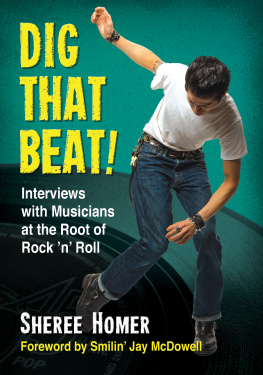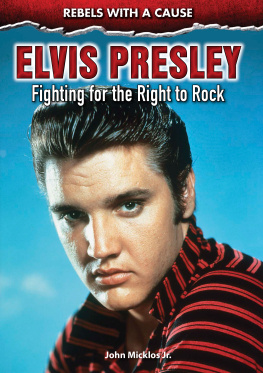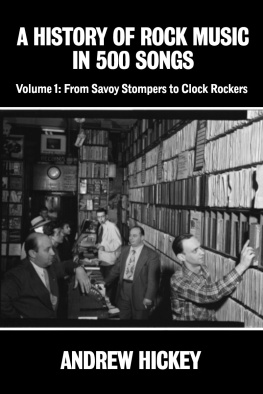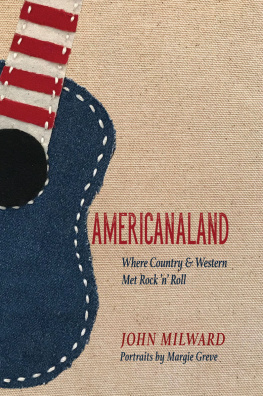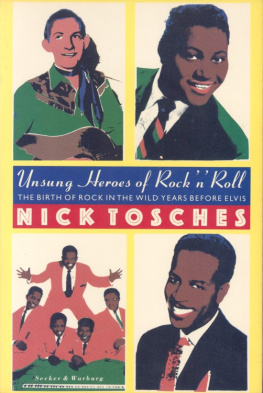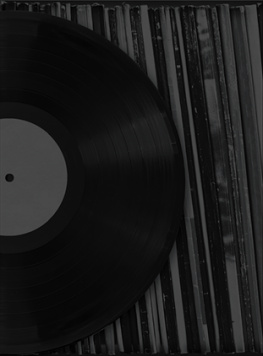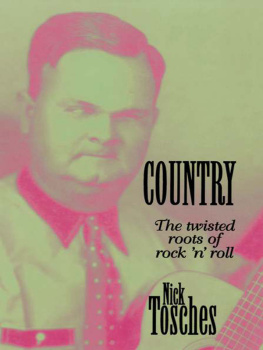
Dig That Beat!
Interviews with Musicians at the Root of Rock n Roll
Sheree Homer
Foreword by Smilin Jay McDowell

McFarland & Company, Inc., Publishers
Jefferson, North Carolina
LIBRARY OF CONGRESS CATALOGUING DATA ARE AVAILABLE
BRITISH LIBRARY CATALOGUING DATA ARE AVAILABLE
e-ISBN: 978-1-4766-2046-6
2015 Sheree Homer. All rights reserved
No part of this book may be reproduced or transmitted in any form or by any means, electronic or mechanical, including photocopying or recording, or by any information storage and retrieval system, without permission in writing from the publisher.
Cover image Patterson Graham/ThinkStock
McFarland & Company, Inc., Publishers
Box 611, Jefferson, North Carolina 28640
www.mcfarlandpub.com
For the fans,
thanks for keeping the music alive!
Acknowledgments
Without God, this project would not have been possible. Words cannot begin to thank Him enough for introducing me to the wonderfully talented, generous, and kind folks that I have met in the rock and roll community and for blessing me with both the talent and the opportunity to tell their stories. Music has always been my sanctuary. Listening to it and writing about it gives me inner peace and solace when the world around me gets too crazy. Music is as essential to me as breathing. This book encompasses my favorite genres: rockabilly, rhythm and blues, traditional country, and 1950s pop.
Many thanks to my mom, who introduced me to rock and roll and for being the best mom anyone could ever hope for. Your unconditional love and support have always encouraged me to pursue my dreams. I cherish the times we spend together attending concerts.
Thanks, too, to my brother Gary, who helped me and my mom through several rough patches. We wouldnt have survived without you. You came to the rescue when we needed you most.
Extra special thanks to all the singers, musicians, and notables for providing my book with rare photos and invaluable insight into your lives and careers. It is both a privilege and an honor to tell others about your talents. Much appreciation is due to Vernon Taylor and his wife, Brenda, James Intveld, Allen Harris, Kent Vikmo, Eddie Angel, Jimmy Sutton, Frank Marquez, Ronnie Mack, Alton Lott, and Jerry King for answering follow-up questions.
Jay McDowellI am grateful to you for writing my foreword. You provided insight into both rockabilly and your own career. I hope to someday visit you at the Musicians Hall of Fame and Museum in Nashville. Thanks for all the hard work you do in helping to preserve the music.
I owe my gratitude to those individuals who helped me gather contact information, research materials, and/or provided photos, or who gave love and encouragement: Dominique Imperial Anglares, Joel Aparicio, Bruce Berenson and XM Radio, Bo Berglind, Steve Bonner, Steve Bowers, Marc Bristol and Blue Suede News magazine, Sonny Burgess, Ken and Lorraine Burke, Trevor Cajiao and Now Dig This magazine, Stuart Colman, Jim Dawson, Neil DelParto, Loretta Doles, Alex East, LeeAnn Enns, Buster Fayte, Kevin Fennell, Ana Fernandez, Steven Ferrier, Paul Freeman, Hans Goeppinger, Ken Haskins, Liz and Lou Holly, John Hopkins and UK Rock magazine, Tracey K. Houston, John Karay, Ken King, Michael MacDonald, Don Mason, Jenni Mayes, Adrian Mazar, Kent McCombs, Carolyn McDonald, Rockin John McDonald, JD McPherson, Marc Mencher, Bob Miner, Dave Moore, Sue Moreno, Nashville Musicians Union, James L. Neibaur, Randy Poe, Rita Posselt, Don Rieck, Jeremy Roberts, Shawn Roux, Jim Shaw, Shreveport Musicians Union, Joe Sixpack, Bob Timmers and the Rockabilly Hall of Fame, Janet VanDeelen, Gladys Van Dyke, Vintage Rock magazine, Nick Willett, Lew Williams, Martin Willis, and Linda York.
Adriaan Sturm and Tony WilkinsonAlthough they are no longer with us, my book wouldnt be complete without mentioning my friends and two of the biggest supporters of the roots scene. Both were always willing to assist if I needed contact information or research materials. The community is forever indebted to your unending love and support. We all miss you and feel the void that your absence has left behind. Wish everyone was as dedicated as you both were.
Last, but certainly not least, much appreciation is due to all the roots singers and musicians who are still rockin today, both contemporary and legendary; the fans, the festival and club promoters, the disk jockeys, the record labels, the writers, the magazines, and anyone else who help keep the flame alive.
Foreword by Smilin Jay McDowell
For a kid growing up in the 70s and 80s, the Midwest was a bit of a musical wasteland. The local radio station offered a really slim cross section of Top 40 rock. The first music you are exposed to is typically from your parents. In our household, luckily, it was a heavy dose of guitar driven rock and roll mixed with country and blues. My dad would put on a Johnny and the Hurricanes record and then follow it with Merle Haggard or the Rolling Stones. I was getting a good foundation of a range of styles. Finding out that there was more out there than what was being fed to us by the radio programmers opened up a whole new world to me.
My father surprised me one day at school. He came into my third grade classroom and said, Come with me. He signed me out, and we went to see The Buddy Holly Story. I didnt know anything about Buddy Holly. I did recognize a song or two but I didnt know how, or when, he died. After I saw the movie, I wanted to find out more about the Crickets, and I learned more of their story from books and liner notes. Fast forward to 1995. I was asked to play bass on a Crickets album, and I got to hang out with them at drummer Jerry Allisons house. This was like a dream. While I was there, Jerry got a phone call. He had been told that there was going to be a new Beatles release called Anthology, and it would include Thatll Be the Day. Jerry was co-writer on that particular song. I can still see Jerry looking around his house with a big grin on his face, saying, I think Ill put in a wine cellar.
The early Beatles records were probably my gateway to rockabilly. Some of my earliest memories are jumping around the living room as Roll Over Beethoven or Little Child was blaring out of the speakers. I was drawn to the guitar. I wanted to learn how to play like George Harrison. I read somewhere that his favorite guitar player was Carl Perkins. It then became apparent that the Perkins who had been credited with writing Matchbox, Honey Dont, and Everybodys Trying to Be My Baby was the man himself. I started rooting around looking for more by this mystery man. The fact that we can click a mouse now to find five generations worth of information blows my mind. In 1981, it took a little more work. I was asking my father about Carl Perkins, and he told me all about Sun Records and some of the other artists that I might appreciate.
I got Elvis Presleys Sun Sessions. This was NOT the Elvis that I knew. I was more familiar with Kentucky Rain and In the Ghetto. Hearing this early stuff, it sounded like a different singer entirely. And the guitar it was like it was from outer space. I was able to get all of the early Gene Vincent and the Blue Caps albums. I love the mixture of sweet innocence and back alley danger. Its like part country and western, part jazz, and part old-fashioned American standards. You can tell that there wasnt really a rulebook they followed. They all seemed to be chasing the success that Elvis was having, but the Blue Caps certainly werent just copying Presleys formula in the recording studio. They had their own thing going on. I had bought a greatest hits cassette by Eddie Cochran when our family was on vacation in England in 1982. To find out about his untimely death made it all the more impressive. He had crammed so much into his few years in the studio.
Next page
